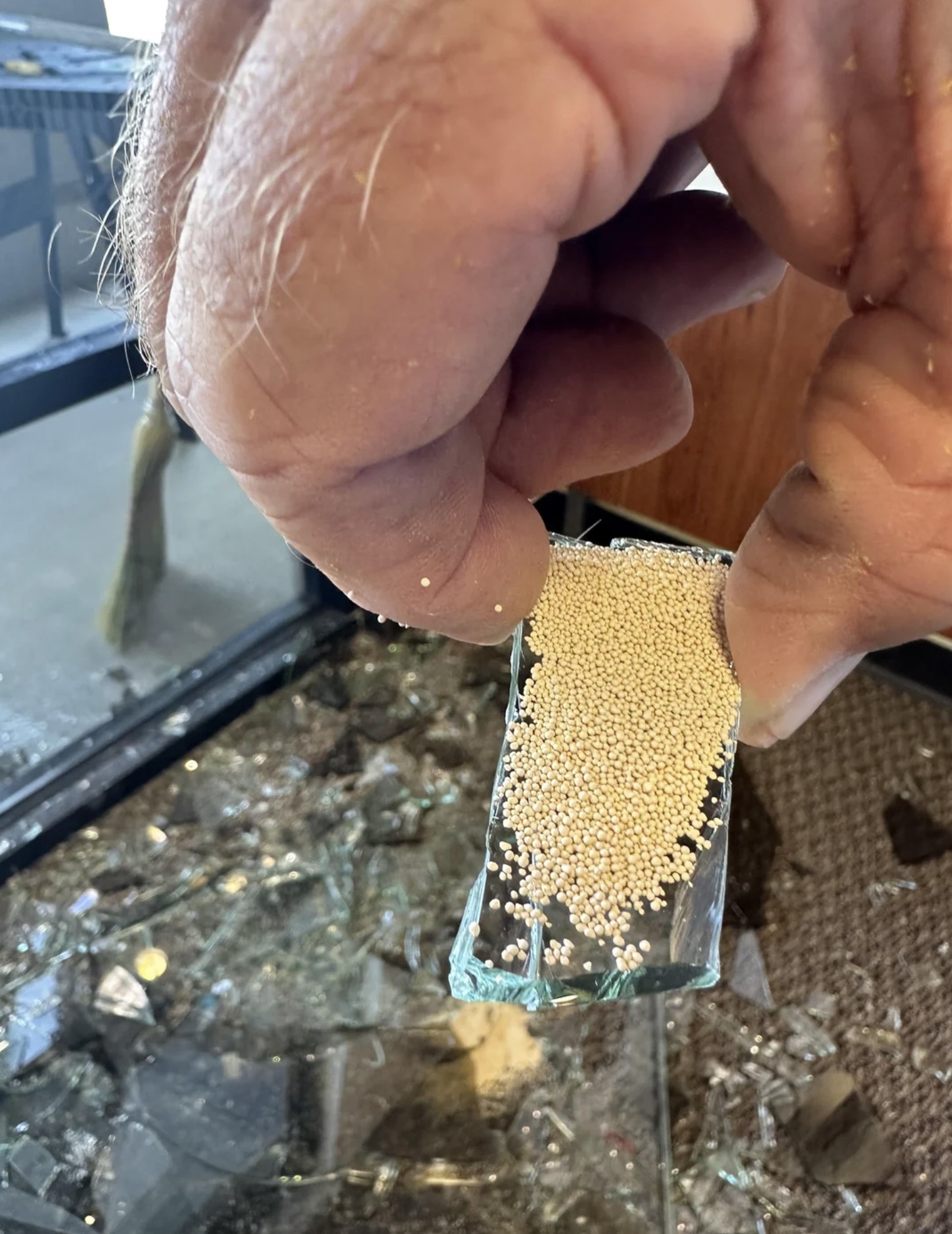When my wife’s office was broken into, we expected the typical aftermath—shattered glass scattered across the floor and some stolen property. What we didn’t expect, however, was the strange sight of numerous tiny cream-colored beads mixed in with the broken glass, spreading across the carpet in small clusters. At first glance, they looked like millet seeds or some type of grain, and their presence was baffling.

When the police arrived to investigate, they examined the beads but couldn’t identify them either. To be cautious, we handed everything over—glass and beads alike—just in case they turned out to be something significant or dangerous. For a while, the mystery lingered, but later we learned the truth: the beads weren’t mysterious at all, just a hidden part of the window’s design. Modern insulated, or dual-pane, windows are constructed with a slim metal spacer that sits between the two layers of glass. Inside this spacer are tiny moisture-absorbing pellets called desiccant beads. Their job is to keep condensation from forming between the panes by soaking up any moisture that sneaks in over time.
These were the very same beads now littering the carpet. When the burglar smashed the front window with a rock, the impact didn’t just crack the glass—it also ruptured the spacer frame, spilling the desiccant beads inside. Some stuck stubbornly to the jagged edges of glass shards, while others rolled freely across the floor. They weren’t left behind by the intruder and had nothing to do with the crime itself—they were simply a part of the window’s construction, revealed only because the glass had been destroyed. To understand why these beads are there in the first place, it helps to know how dual-pane windows work. They’re sealed to improve insulation and keep homes or offices more energy-efficient.
Over the years, the seals can degrade, allowing moisture to seep into the space between the panes. Left unchecked, this moisture can cause fogging, cloudiness, or even mildew inside the glass. The desiccant beads, positioned within the spacer, quietly absorb this unwanted moisture and prevent these issues from developing. Common materials used for these beads include silica gel, zeolite, and molecular sieves, all of which are highly effective at trapping moisture. While the beads are non-toxic, they shouldn’t be left lying around, especially in places where children or pets could accidentally ingest them.
Cleaning them up promptly is the safest choice after a window breaks. In our case, discovering them scattered on the floor was simply an unexpected byproduct of the burglary. What had seemed like a clue or unusual debris turned out to be an ordinary part of a very common building material. The experience was a small reminder that the inner workings of everyday objects often go unnoticed—until something breaks and reveals what’s inside. It also served as a good lesson in not jumping to conclusions when faced with something unfamiliar.
If you ever find yourself staring at tiny cream-colored beads alongside shards of broken glass, you’re most likely looking at the desiccant from a ruptured dual-pane window rather than anything suspicious. Still, if you have any doubt, especially after a break-in, there’s nothing wrong with handing it over to the authorities for peace of mind. As for us, the mystery was solved without any real drama. The beads had nothing to do with the burglar and offered no clues to their identity.
They were just another hidden detail of modern construction, unexpectedly exposed by an act of vandalism. And while the burglary itself was frustrating, at least we walked away with an odd bit of trivia about how windows are made. Of course, if you happen to be in central California and notice someone selling a suspicious number of Ray-Ban or Costa sunglasses, you might want to let the police know—because unlike the harmless desiccant beads, that could actually be connected to a crime.





